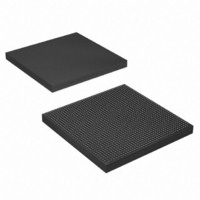EP4SGX290KF40C3N Altera, EP4SGX290KF40C3N Datasheet - Page 565

EP4SGX290KF40C3N
Manufacturer Part Number
EP4SGX290KF40C3N
Description
IC STRATIX IV GX 290K 1517FBGA
Manufacturer
Altera
Series
Stratix® IV GXr
Datasheets
1.EP4SGX110DF29C3N.pdf
(80 pages)
2.EP4SGX110DF29C3N.pdf
(1154 pages)
3.EP4SGX110DF29C3N.pdf
(432 pages)
4.EP4SGX110DF29C3N.pdf
(22 pages)
5.EP4SGX110DF29C3N.pdf
(30 pages)
6.EP4SGX110DF29C3N.pdf
(72 pages)
Specifications of EP4SGX290KF40C3N
Number Of Logic Elements/cells
291200
Number Of Labs/clbs
11648
Total Ram Bits
17248
Number Of I /o
744
Voltage - Supply
0.87 V ~ 0.93 V
Mounting Type
Surface Mount
Operating Temperature
0°C ~ 85°C
Package / Case
1517-FBGA
Lead Free Status / RoHS Status
Lead free / RoHS Compliant
Number Of Gates
-
Other names
544-2624
Available stocks
Company
Part Number
Manufacturer
Quantity
Price
- EP4SGX110DF29C3N PDF datasheet
- EP4SGX110DF29C3N PDF datasheet #2
- EP4SGX110DF29C3N PDF datasheet #3
- EP4SGX110DF29C3N PDF datasheet #4
- EP4SGX110DF29C3N PDF datasheet #5
- EP4SGX110DF29C3N PDF datasheet #6
- Current page: 565 of 1154
- Download datasheet (32Mb)
Chapter 1: Transceiver Architecture in Stratix IV Devices
Transceiver Block Architecture
February 2011 Altera Corporation
f
f
1
1
SATA and SAS Options
Serial advanced technology attachment (SATA) and serial attached SCSI (SAS) are
computer bus standards used in computers to transfer data between a mother board
and mass storage devices. Stratix IV GX and GT devices offer options to implement a
transceiver that satisfies SATA and SAS protocols. These options are:
■
■
These options and their selections are described in the following sections.
In Basic functional mode, you can enable the optional input signal tx_forceelecidle.
When this input signal of a channel is asserted high, the transmitter buffer in that
channel is placed in the electrical idle state. During electrical idle, the output of the
transmitter buffer is tri-stated.
This signal is used in applications such as SATA and SAS for generating out of band
(OOB) signals. An OOB signal is a pattern of idle times and burst times. Different
OOB signals are distinguished by their different idle times.
Manual CDR lock mode is required because you must be in lock-to-reference mode
during OOB signaling.
For more information about the transmitter buffer in the Electrical Idle state, refer to
the “Transmitter Buffer Electrical Idle” section in
In Basic functional mode, you can enable the optional rx_signaldetect signal (used
for protocols such as SATA and SAS) only if you select the 8B/10B block. When you
select the optional rx_signaldetect signal, an option is available to set the desired
threshold level of the signal being received at the receiver ’s input buffer. If the signal
threshold detection circuitry senses the signal level present at the receiver input buffer
to be higher than the chosen signal detect threshold, it asserts the rx_signaldetect
signal high. Otherwise, the signal threshold detection circuitry de-asserts the
rx_signaldetect signal low. This signal is useful in applications such as SATA and
SAS for detecting OOB signals.
For more information on the signal threshold detection circuitry, refer to the “Signal
Threshold Detection Circuitry” section in
chapter.
For information about other protocols supported using Basic functional mode, refer to
AN 577: Recommended Protocol Configurations for Stratix IV
Transmitter in electrical idle mode
Receiver signal detect functionality
Transmitter Buffer Electrical Idle
Receiver Input Signal Detect
Transceiver Architecture in Stratix IV Devices
Stratix IV Device Handbook Volume 2: Transceivers
“PCIe Mode” on page
FPGAs.
1–127.
1–121
Related parts for EP4SGX290KF40C3N
Image
Part Number
Description
Manufacturer
Datasheet
Request
R

Part Number:
Description:
CYCLONE II STARTER KIT EP2C20N
Manufacturer:
Altera
Datasheet:

Part Number:
Description:
CPLD, EP610 Family, ECMOS Process, 300 Gates, 16 Macro Cells, 16 Reg., 16 User I/Os, 5V Supply, 35 Speed Grade, 24DIP
Manufacturer:
Altera Corporation
Datasheet:

Part Number:
Description:
CPLD, EP610 Family, ECMOS Process, 300 Gates, 16 Macro Cells, 16 Reg., 16 User I/Os, 5V Supply, 15 Speed Grade, 24DIP
Manufacturer:
Altera Corporation
Datasheet:

Part Number:
Description:
Manufacturer:
Altera Corporation
Datasheet:

Part Number:
Description:
CPLD, EP610 Family, ECMOS Process, 300 Gates, 16 Macro Cells, 16 Reg., 16 User I/Os, 5V Supply, 30 Speed Grade, 24DIP
Manufacturer:
Altera Corporation
Datasheet:

Part Number:
Description:
High-performance, low-power erasable programmable logic devices with 8 macrocells, 10ns
Manufacturer:
Altera Corporation
Datasheet:

Part Number:
Description:
High-performance, low-power erasable programmable logic devices with 8 macrocells, 7ns
Manufacturer:
Altera Corporation
Datasheet:

Part Number:
Description:
Classic EPLD
Manufacturer:
Altera Corporation
Datasheet:

Part Number:
Description:
High-performance, low-power erasable programmable logic devices with 8 macrocells, 10ns
Manufacturer:
Altera Corporation
Datasheet:

Part Number:
Description:
Manufacturer:
Altera Corporation
Datasheet:

Part Number:
Description:
Manufacturer:
Altera Corporation
Datasheet:

Part Number:
Description:
Manufacturer:
Altera Corporation
Datasheet:

Part Number:
Description:
CPLD, EP610 Family, ECMOS Process, 300 Gates, 16 Macro Cells, 16 Reg., 16 User I/Os, 5V Supply, 25 Speed Grade, 24DIP
Manufacturer:
Altera Corporation
Datasheet:












